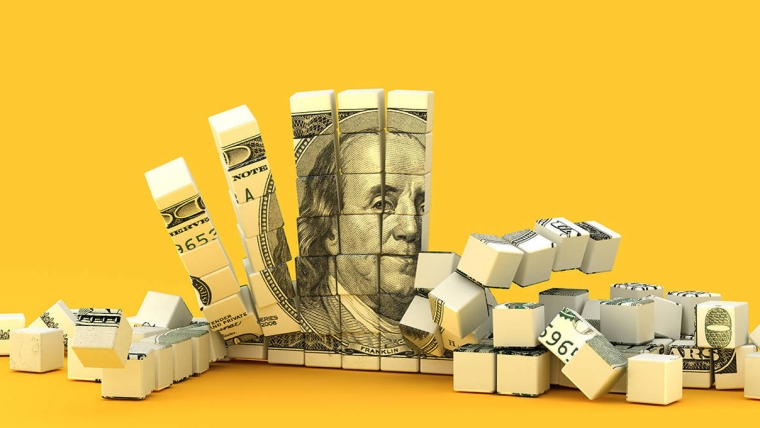
According to US President Donald Trump and his advisers, the international monetary system is broken and works to the disadvantage of Americans. A radical reform is required, and it can probably come only from a highly disruptive reordering of the world.
We have been here before. In 1944, the United States hosted the 44-country Bretton Woods conference, which charted a course out of the dysfunctional order of the interwar period. Now, US Treasury Secretary Scott Bessent regularly conjures the image of a new Bretton Woods moment. The goal would be to deliver a “Mar-a-Lago Accord” that addresses three overlapping, interconnected problems that are not typically lumped together, because they are the business of separate agencies and separate international institutions.
The first concerns trade: how to stop the loss of American jobs and livelihoods. The second concerns money: the dollar’s centrality in the global system leaves it overvalued, which makes American exports too expensive. And the third concerns security: the US bears the burden of defending other countries. The Trump administration’s conceit is that US trade and security policies can be used to force others to orchestrate a depreciation of the dollar without destroying its reserve status.
The idea of a Mar-a-Lago Accord draws directly on previous occasions when the US took steps to reinvent the international monetary system and bring down the value of the dollar. The most obvious reference point is the December 1971 Smithsonian Agreement, which President Richard Nixon proclaimed was “the most significant monetary agreement in the history of the world.” Another precedent is the September 1985 Plaza Accord under President Ronald Reagan, which probably is the inspiration for the Trump administration’s effort.
In both cases, a US president believed that the dollar was overvalued, that American exporters and workers were disadvantaged, and that US economic policy had been blocked by foreign obstruction. This sense of entrapment created an impetus for radical disruption. Nixon famously concluded that America could force a necessary change if he came across as a madman. His treasury secretary, the larger-than-life Texan John Connally, famously told Europeans: “the dollar is our currency, but it’s your problem.”
In each case, the stick with which to beat other countries was trade policy. In 1971, with the dollar’s convertibility into gold suspended, Nixon imposed a 10% surcharge on all imports (the same minimum tariff that Trump announced on April 2). Similarly, in 1985, congressional demands to stem the flood of imports (largely from Japan) gave Treasury Secretary James Baker what he needed to force the rest of the then-G5 developed economies to depreciate their currencies.
Bessent is channeling Connally and Baker when he tells reporters that the current tariffs are meant to push other countries toward a new deal. Supposedly, 75 governments are willing to negotiate, and 15 have already proposed a deal. The whole world, Trump claims, is “kissing my ass.”
But neither the Smithsonian Agreement nor the Plaza Accord lasted very long. The Smithsonian parities didn’t stick, largely because the US continued a big fiscal expansion that sucked in more imports. Then, when the Europeans, followed by the rest of the world, moved away from fixed exchange rates in 1973, the dollar needed to be depreciated by much more. Similarly, the Plaza Accord was quickly succeeded by the 1987 Louvre Accord, which aimed to stabilise exchange rates; but disputes about how to achieve this goal triggered a major international stock market panic that October.
This history augurs poorly for a modern accord. Worse, Trump and many around him genuinely seem to believe that tariffs will raise the revenue they need to make room for the tax cuts they crave. By this reasoning, tariffs cannot be just a negotiating tool; they would have to become a permanent reality.
All the talk of a Mar-a-Lago Accord stems from an influential – and now notorious – November 2024 paper by Stephen Miran, “A User’s Guide to Restructuring the Global Trading System,” which probably won him his post as chair of the White House Council of Economic Advisers. After warning about shocks to the real-estate market and the federal budget from rising long-term yields, Miran proposed his grand solution: The US should use its security guarantees as leverage over countries holding dollar assets. This, too, has historical precedents. In the 1960s, the US made it clear to West Germany that its defense against the Soviet threat was contingent on German accommodation of US monetary goals.
The same logic had also been applied during the interwar period, when Britain and France, the giants of nineteenth-century finance, held substantial gold reserves. The British and the French encouraged countries on the periphery, especially in central and eastern Europe, to hold a large part of their reserves in British and French short-term deposits and Treasury bills in exchange for security guarantees.
But by the 1930s, these smaller states knew that this arrangement was not working, and insisted on holding only gold. Today, it is not only China, Russia, and Turkey that are pumping up their gold reserves; so, too, are those European states that were so vulnerable during the interwar period: Czechia, Hungary, and Poland.
The risk inherent in a Mar-a-Lago Accord is that the weaponisation of trade and US security assurances to weaken the dollar will destroy confidence in the greenback. An effort supposedly to defend American workers will overshoot, necessitating a new international currency agreement, but with the US no longer commanding the credibility to supply it. We already know that the Smithsonian Agreement and the Plaza Accord brought little long-term relief to US workers. An attempt to replicate them would be ineffective – and possibly wholly destructive.
Harold James, Professor of History and International Affairs at Princeton University, is the author, most recently, of Seven Crashes: The Economic Crises That Shaped Globalisation (Yale University Press, 2023). Copyright: Project Syndicate, 2025, and published here with permission.

We welcome your comments below. If you are not already registered, please register to comment.
Remember we welcome robust, respectful and insightful debate. We don't welcome abusive or defamatory comments and will de-register those repeatedly making such comments. Our current comment policy is here.